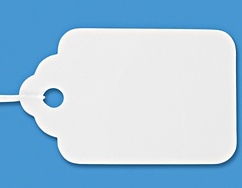Articles and News
Getting The Most From Your Pricing Strategy | May 11, 2016 (0 comments)

Merrick, NY—Wouldn’t it be great if your customers instinctively knew what your products were worth and happily paid that price for them without question, haggling, or invoking the Internet? What if all your products were priced the same? In those far-fetched situations, you wouldn’t need a pricing strategy for your store. But that’s not real life, so it’s likely you have a pricing strategy. Chances are, it’s based on some kind of formula involving wholesale cost plus whatever you calculated for overhead. But is it really working optimally for you?
You have products and pricing and customers. Rarely are all three on the same page at the same time. To help you find your best strategy, we went off in search of answers. Sometimes, as merchandising expert Abe Sherman of BIG shows, sometimes visual intangibles matter more than actual costs in setting an appropriate price. And in an interesting article we found on Entrepreneur.com, sometimes the answers are in the most unexpected places. Author Mark Stiving, a marketing expert and coach, offers some smart guidelines here, while another article on Entrepreneur.com by contributor Bing Gordon discusses the importance of price anchoring (having something else by which to compare a price) and the concept of fairness, where consumers willingly incur a personal cost to “punish” others for what they see as not being fair.
Mark Stiving outlines a three step approach:
1. Know Your Value. Value is not the same as marking up a wholesale cost. Instead it’s knowing what the product you are selling is worth to your particular client in your particular market and in your particular store, and then pricing the piece accordingly. Clearly that’s easier said than done, but if you are not already working your pricing this way, start with a few pieces and see how it goes. Throw out the wholesale value and start pricing with fresh eyes. Bing Gordon suggests putting the price with the product specs as a way to build value.
2. Segment your Market. Segmented pricing sets various prices for various markets. This may include pricing that targets customer needs (for instance, a rush repair job may cost the customer more than a slower turn-around time).
“Companies need to look for customers with different degrees of willingness to pay, then find a way to charge those customers different prices,” he says. For instance, think about that trade-in ring that just came in and had no price tag. If a well-dressed customer came in looking for something like that, then you might quote a higher price than a housewife carrying a baby. Or maybe not. These types of pricing are very personalized and can vary tremendously. Does this sort of strategy work for you? Only you can decide.
3. Have a product portfolio strategy. This is similar to—but not the same as—the add-on sale. Retailers using a product portfolio pricing strategy find a way to offer the same product they sell individually in combination with other products or service that enhance the product. Maybe it’s putting that gorgeous ring in with a necklace and earrings at a special price. Maybe it’s offering those earrings for sale with a jewelry box and an at-home cleaning unit. Whatever the specifics, it’s putting your products with complementary extras to help make a sale.
Author Bing Gordon points out in his article that pricing is rooted in human psychology and game theory. Indeed, behavioral economist Dr. Dan Ariely makes the same point in his Predictably Irrational books, where he explains that while human beings tend to act irrationally in many instances—shopping being a prime example—the ways in which they do so is surprisingly predictable.
Most retailers eventually find that pricing is more art than science. If this is the case in your store, focusing on your pricing and making small changes may bring in additional dollars.
Top image: Uline.com







